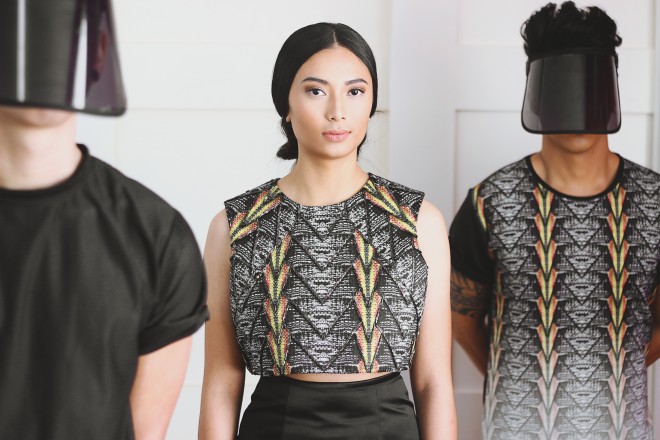
SENIOR fashion students of the Philippine Women’s College-Davao (PWC-Davao) drew upon the heritage and history of Davao’s tribal groups as inspiration for a capsule garment collection presented during ArThrive, their graduation show and art de- sign exhibit.
The collection featured contemporary interpretations of specific cultural elements of southern ethnic groups.
The students were mentored and guided by fashion designer and educator Emi Alexander Englis, who is passionate about what he calls “heritage fashion.”
Englis, who is also head of PWC-Davao’s fashion design program, believes that Mindanao designers have different takes on aesthetics and techniques. These unique Mindanawon identities are derived from how the designers develop and understand the traditions of their roots.
From there, these artists can carve a unique niche to jumpstart their creativity and turn this into a full-time fashion business.
Rich culture
Englis said that this generation of designers can tap into their roots and humbly pursue fashion.
The students did so with substance and form, veering away from the tacky and obvious. Of the nine senior students, four young designers stood out and were given recognition.
Wilson Niñofranco Limon created ready- to-wear pieces (mesh and mandala shirts, walking shorts and dresses with digital prints) that reflect the rich culture and sto- ries of the Tagabawa Bagobo tribe.
The vibrant colors and details “represent an unforgettable encounter of life’s beauty recorded by the ethnolinguistic group’s artisans.”
MJ DE CASTRO
“The broken lines, geometric figures and symmetry of colors are the languages of choice by the Tagabawa Bagobos,” Limon wrote in his thesis. “Each dream, stories of epic victories and Mother Nature, serves as a faucet of inspiration, feeding the hungry creative soul.”
Limon was given a Best Material, Technique and Construction for a Themed Capsule Collection award for graduation.
Amanda Lee Velasco’s all-white collec- tion was inspired by the Sinalapid belts of the Matigsalug. Her deconstruction of the Sinalapid led her to create minimalist dresses with boxy silhouettes that speak volumes even in their simplicity.
RAPHAEL METING
Best thesis
Velasco also conveyed her fashion state of mind in her creations: white on white, in- tricate bead patterns and deep V-necklines. “My collection follows the minimalism trend that doesn’t conform to any standard form, age or status,” she said. Her Matigsalug tribe-inspired collection earned her a Best Thesis award.
Alexis Nickole Rule’s collection—neo- prene dresses inspired by details of the Maranao’s Malong Landap—was a fashion- forward and wearable interpretation of traditional textile’s minute details. She inject- ed some glam into royal Maranao ethnography by using an edgy color combination: gold and black.
Jozel Ignes had a sporty take on her Sama tribe-inspired collection, which comprised pieces with leather, neoprene and upholstery cutouts plus floral patterns.
Ignes and Rule were lauded for their collection’s runway appeal and presentation.
As the graduation show came to an end, the young Mindanawon designers were re- minded that there’s so much about their heritage and past that can bring their de- signs from the runway to everyday life.
Visit us on Instagram Inquirer2bU; Facebook: 2bU; e-mail 2bu.lifestyle.inquirer@gmail.com